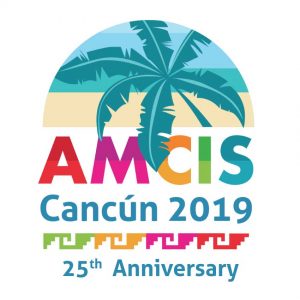Abstract
Among the various materializations of Web 2.0 technologies, social media can be identified as those that have been influencing the daily life of individuals of different nationalities and organizations from the most diverse segments. Regardless of which social networking platform is used, the principles are the same, and have been consolidated as the tools themselves are consolidated as communication tools increasingly linked to the mobility, interactivity and ubiquity of technology. From this observation, it can also be said that the use of social media in the strategic communication of public management has become a current practice in governments around the world. However, in this case, the corporate use of social networking platforms aims to raise citizen engagement, increase participation, collaboration and transparency of public management, as well as provide closer contact with the citizen, which would be unlikely without the use of these platforms (Mergel, 2013). In addition, social media, in addition to changing the forms of interaction with the citizen, have changed the way of working of public institutions (Criado et al., 2013). Magro (2012) conducted a broad literature review in the period from 2007 to 2011 on the use of social media in e-government. The author points out that this practice began in the USA around the year 2007, without great strategic planning. As a result, low citizen participation was observed; on the other, the population was in favor of this initiative, increasing the credibility of the government. As a result, social media initiatives have evolved in a number of countries around the world, being used successfully in electoral campaigns, creating closer contact between candidates and voters. Given the problematic presented, this project aims to map the forms of use of social media, in particular the platforms of social networks, by the prefectures of the Brazilian capitals. To achieve this objective, the following steps are proposed a) Develop an analysis framework for the communication processes carried out via social networking platforms between public and citizen management; b) Map the messages posted on the social networking platforms by the municipalities of the Brazilian capitals according to the framework developed; c) Identify relevant points and potential problems in the use of social networking platforms for communication with citizens, including issues related to representation of different regions, social classes and population contexts. According to the proposed objectives, research can be classified as a mixed design, that is, it involves aspects of qualitative research and quantitative research, both in data collection and analysis. References Criado, J. I.; Sandoval-Almazan, R.; Gil-Garcia, J. R. 2013. “Government innovation through social media”. Government Information Quarterly, 30(4), p. 319–326. Magro, M. J. 2012. “A Review of Social Media Use in E-Government”. Administrative Sciences, 2(2), p. 148–161. Mergel, I. 2013. ‘A framework for interpreting social media interactions in the public sector”. Government Information Quarterly, 30(4), p. 327–334.
Recommended Citation
Mantovani, Daielly; Lucas Júnior, Durval; Viana, Adriana Backx Noronha; and Júnior, Celso Machado, "Social Network Use for Communication by Municipalities in Brazil" (2019). AMCIS 2019 Proceedings. 3.
https://aisel.aisnet.org/amcis2019/treo/treos/3
Social Network Use for Communication by Municipalities in Brazil
Among the various materializations of Web 2.0 technologies, social media can be identified as those that have been influencing the daily life of individuals of different nationalities and organizations from the most diverse segments. Regardless of which social networking platform is used, the principles are the same, and have been consolidated as the tools themselves are consolidated as communication tools increasingly linked to the mobility, interactivity and ubiquity of technology. From this observation, it can also be said that the use of social media in the strategic communication of public management has become a current practice in governments around the world. However, in this case, the corporate use of social networking platforms aims to raise citizen engagement, increase participation, collaboration and transparency of public management, as well as provide closer contact with the citizen, which would be unlikely without the use of these platforms (Mergel, 2013). In addition, social media, in addition to changing the forms of interaction with the citizen, have changed the way of working of public institutions (Criado et al., 2013). Magro (2012) conducted a broad literature review in the period from 2007 to 2011 on the use of social media in e-government. The author points out that this practice began in the USA around the year 2007, without great strategic planning. As a result, low citizen participation was observed; on the other, the population was in favor of this initiative, increasing the credibility of the government. As a result, social media initiatives have evolved in a number of countries around the world, being used successfully in electoral campaigns, creating closer contact between candidates and voters. Given the problematic presented, this project aims to map the forms of use of social media, in particular the platforms of social networks, by the prefectures of the Brazilian capitals. To achieve this objective, the following steps are proposed a) Develop an analysis framework for the communication processes carried out via social networking platforms between public and citizen management; b) Map the messages posted on the social networking platforms by the municipalities of the Brazilian capitals according to the framework developed; c) Identify relevant points and potential problems in the use of social networking platforms for communication with citizens, including issues related to representation of different regions, social classes and population contexts. According to the proposed objectives, research can be classified as a mixed design, that is, it involves aspects of qualitative research and quantitative research, both in data collection and analysis. References Criado, J. I.; Sandoval-Almazan, R.; Gil-Garcia, J. R. 2013. “Government innovation through social media”. Government Information Quarterly, 30(4), p. 319–326. Magro, M. J. 2012. “A Review of Social Media Use in E-Government”. Administrative Sciences, 2(2), p. 148–161. Mergel, I. 2013. ‘A framework for interpreting social media interactions in the public sector”. Government Information Quarterly, 30(4), p. 327–334.


